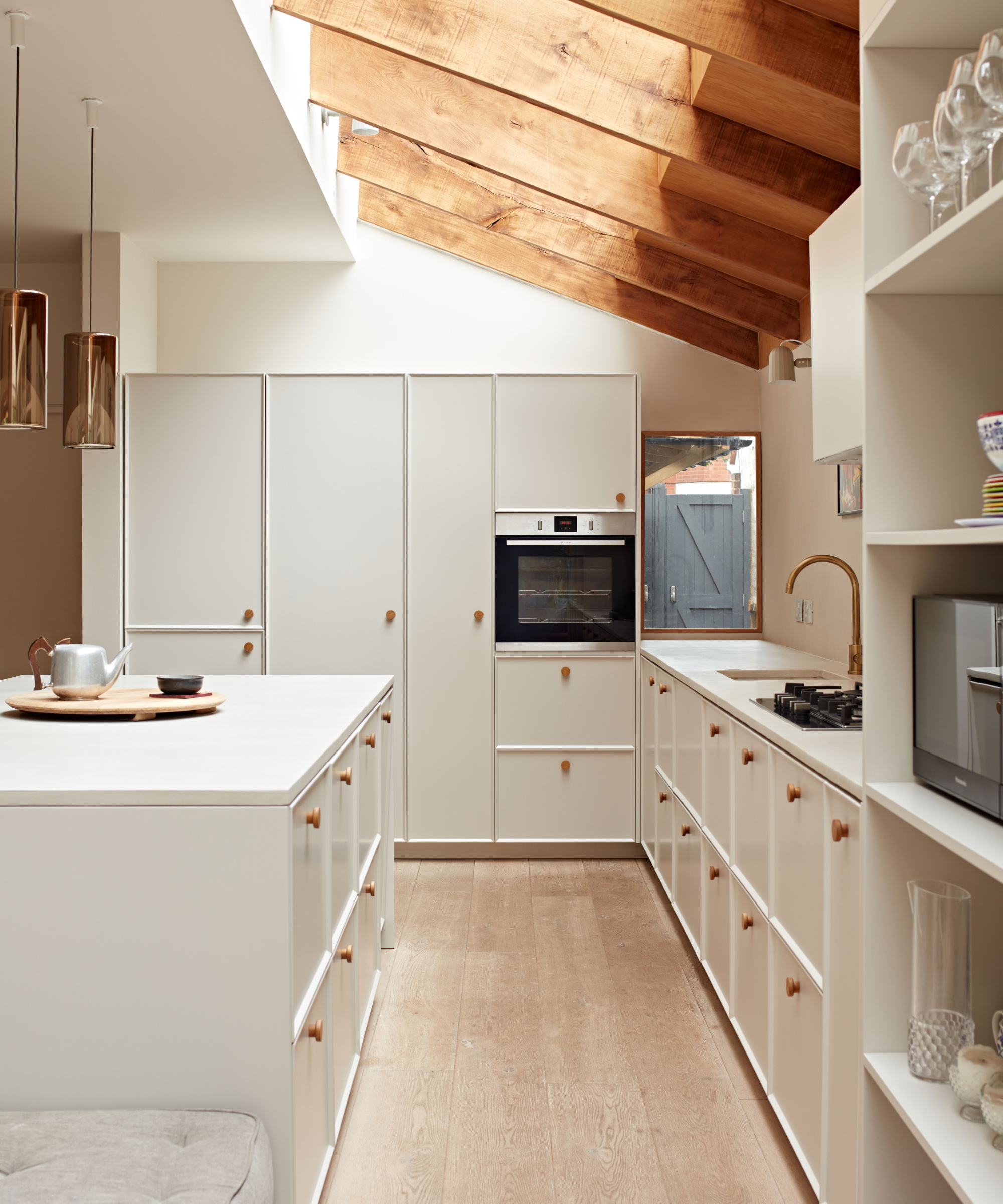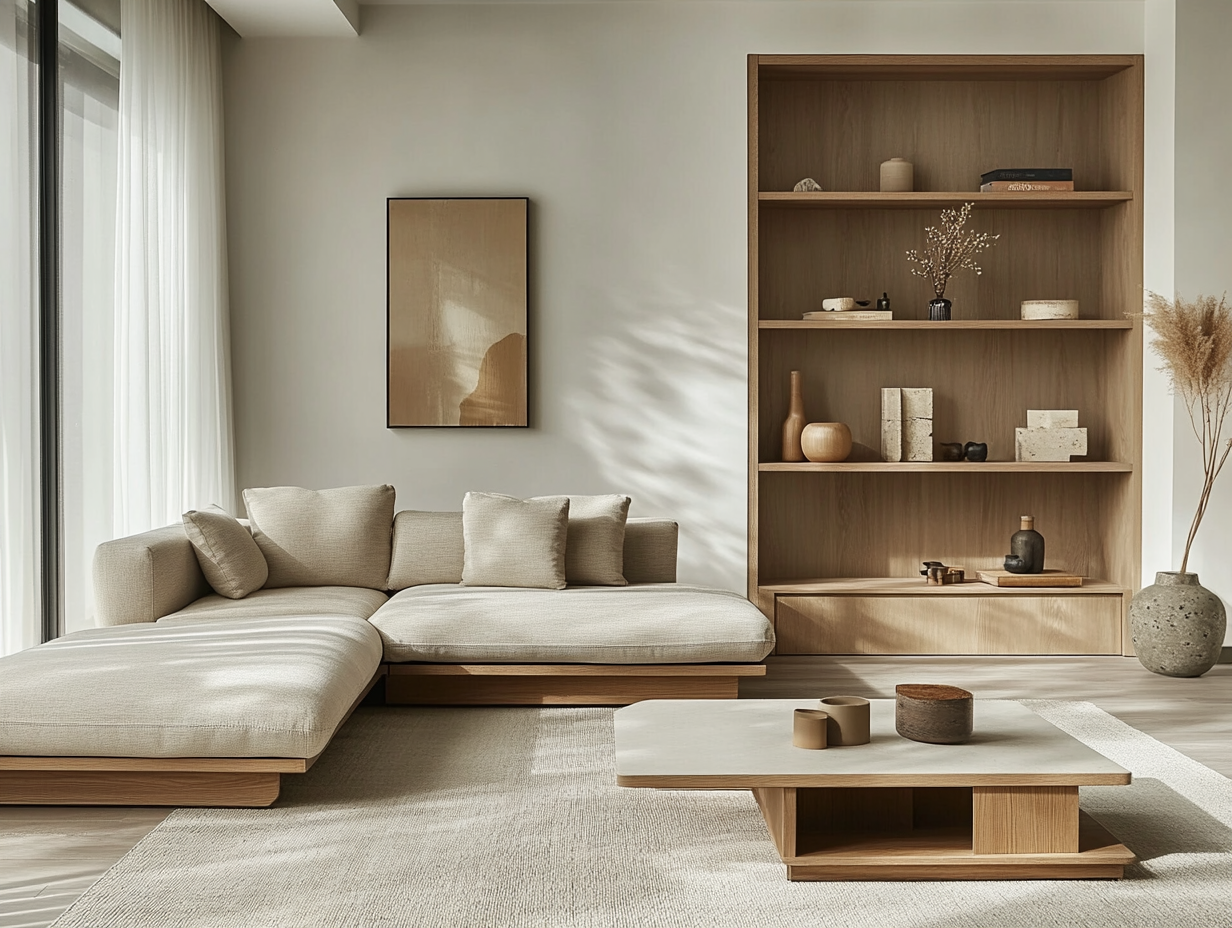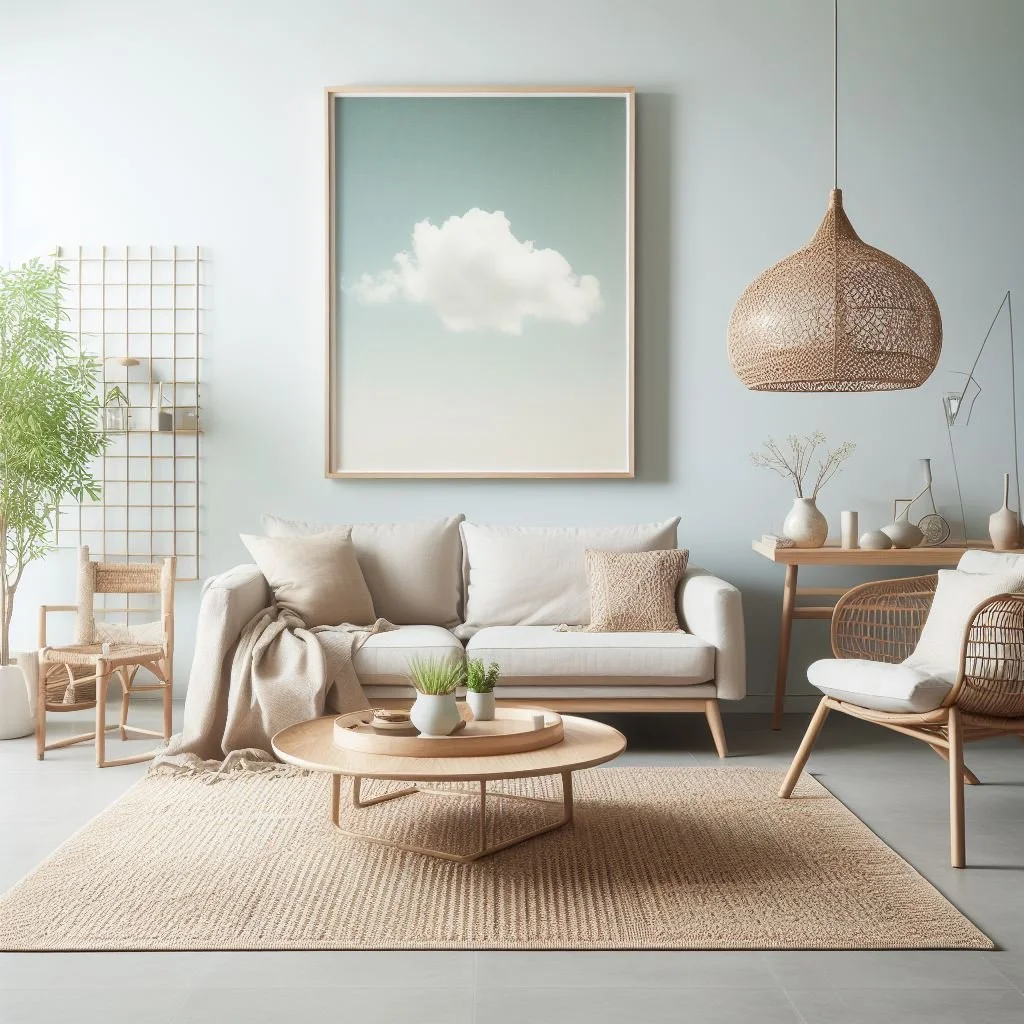The influence of minimalism on the choice of multifunctional furniture for organized spaces

Embracing Minimalism in Modern Interiors
In an increasingly chaotic world, many individuals are turning to minimalism as a remedy for clutter and disorganization. This lifestyle emphasizes the importance of simplicity, prioritizing quality over quantity in our living spaces. As a result, multifunctional furniture has emerged as a pivotal choice for creating organized and serene environments, allowing people to find solace in spaces that invite calm rather than chaos.
What is Multifunctional Furniture?
Multifunctional furniture serves multiple purposes, helping to maximize space without sacrificing style. This concept is incredibly relevant as urban living spaces grow smaller, especially in metropolitan areas like New York City and San Francisco. Multifunctional furniture can encompass a variety of designs, including:
- Convertible sofas that transform from a stylish sofa into an inviting sleeping area, ideal for accommodating guests without the need for a separate guest room.
- Storage ottomans that provide both comfortable seating and concealed storage, perfect for stashing away blankets, books, or toys, effectively keeping living areas tidy.
- Extendable dining tables that adapt to your guest list, seamlessly transitioning from a cozy setting for two to a larger configuration for family gatherings or dinner parties.
This shift toward multifunctionality aligns with minimalist principles, offering a pathway to a less cluttered life. By choosing well-designed pieces that serve more than one purpose, homeowners can:
- Create organized spaces that feel open and inviting, allowing for better flow and functionality in daily activities.
- Reduce the number of items in their homes, leading to less time spent on maintenance and more time enjoying life.
- Enhance the aesthetic appeal of their interiors, as streamlined, purposeful furniture often feels more cohesive and sophisticated.
The Impact of Minimalism
The influence of minimalist design extends beyond aesthetics; it promotes a thoughtful approach to consumption and living space organization. Embracing this philosophy encourages individuals to reflect on what they truly need in their lives, thus leading to more intentional purchases.
Understanding how this design philosophy reshapes our choices in furniture can guide us towards an efficient and harmonious lifestyle. For instance, the rise of companies specializing in minimalist designs—like IKEA and Muji—reflects a growing desire for functional yet aesthetically pleasing furniture that meets varying needs. From desks that fold away to reveal hidden compartments to bookshelves designed to double as room dividers, innovations in multifunctional designs are endless.

In this unfolding journey toward a minimalist lifestyle, the impact of thoughtful design is profound. It invites individuals to not merely live in their spaces but to inhabit them mindfully, creating homes that resonate with tranquility and purpose. As more people gravitate toward minimalism, exploring multifunctional furniture becomes not just a trend but a foundational step towards a fulfilling and organized life.
DISCOVER MORE: Click here to find out how minimalist design can enhance your space
Redefining Space: How Minimalism Shapes our Furniture Choices
The growing preference for minimalism has fundamentally changed how we design and manage our living environments. As urban centers burgeon, making space a premium, the quest for organized spaces has reached new heights. Multifunctional furniture emerges not just as a space-saving solution but also as a lifestyle choice, reflecting larger cultural trends toward simplicity and efficiency.
When considering the impact of minimalism, it’s essential to recognize that this design philosophy advocates for thoughtful consumption, urging individuals to select items that enhance both functionality and beauty. This shift is more than aesthetic; it signifies a major transition in consumer behavior, prompting people to evaluate their belongings critically. Consequently, it leads to the selection of furniture pieces that provide maximum utility with minimal footprint.
In alignment with this mindful approach, multifunctional furniture offers various options tailored for various needs and scenarios. Here are some compelling advantages that make these pieces so sought after:
- Space Efficiency: Multifunctional furniture is engineered to make the most of limited space, particularly in smaller apartments or homes. Choosing items that can serve double duty prevents overcrowding while ensuring that all essential functions are met.
- Cost-Effectiveness: Investing in versatile pieces means that fewer items are required to achieve the same functionality. This not only saves money in the long run but also reduces the environmental impact of manufacturing and disposing of excess furniture.
- Customization Opportunities: Many multifunctional furniture options allow for personalization, making it easier to align with individual aesthetics and needs. From modular sofas that can be rearranged to suit varying layouts to adjustable desks that accommodate various working styles, these choices reflect a versatile approach to decor.
The element of functionality that multifunctional furniture provides is indispensable for cultivating organized spaces. Take, for instance, a stylish media console that can easily transition into a workspace with a fold-down desk. This flexibility allows individuals to transform living rooms into work areas without losing te aesthetic appeal of the home. Similar cases can be seen with Murphy beds, which have increasingly gained popularity in contemporary designs; they allow for a guest bedroom that can be tucked away to create more usable space during the day.
Moreover, the relationship between minimalist design and multifunctionality extends to sustainability in furniture choices. As awareness around environmental issues grows, consumers are increasingly favoring pieces designed with eco-friendly materials. Brands focused on minimalism often prioritize sustainable manufacturing practices, which resonates with individuals committed to an ecological lifestyle.
As the trend of minimalism continues to rise, it’s evident that the choices we make regarding furniture are more than just reflections of personal style; they represent a broader dialogue about purpose and value in our lives. Every decision to embrace multifunctional furniture in organized spaces supports a holistic approach to living well, turning homes into havens of efficiency and tranquility.
| Advantage | Description |
|---|---|
| Space Optimization | Minimalist designs emphasize efficient use of space, making multifunctional furniture ideal for small areas. |
| Increased Functionality | Furniture that serves multiple purposes helps maintain organization while reducing the clutter of traditional items. |
As minimalism continues to influence the design of multifunctional furniture, it encourages homeowners to reconsider their space effectively. By choosing pieces that provide unique solutions to everyday challenges, individuals are not only enhancing their living areas but also promoting a sense of calm and order within their homes. The philosophy behind minimalism shines through the careful selection of furniture that embodies simplicity and versatility. For instance, a coffee table that transforms into a desk or a sofa bed can dramatically transform how spaces are utilized, especially in urban environments where space is at a premium.Furthermore, the aesthetic appeal of minimalist furniture often aligns with modern design principles that favor clean lines and neutral color palettes. This harmony between functionality and aesthetics invites individuals to engage deeply with their personal spaces, inspiring homeowners to pursue a lifestyle enriched by thoughtful design. Ultimately, exploring these contemporary trends infuses life and practicality into organized spaces, compelling you to delve further into the world of multifunctional furniture.
DISCOVER MORE: Click here for tips on creating a minimalist wardrobe
The Intersection of Aesthetics and Practicality
As minimalism takes center stage in modern design, the aesthetic appeal of multifunctional furniture has become a crucial consideration for consumers. The demand for items that not only serve multiple purposes but also exhibit clean lines and an uncluttered look has led to the rise of a variety of innovative furnishings. From Scandinavian-inspired designs featuring natural materials to sleek, contemporary pieces, the emphasis is on a balance between form and function.
The significance of multifunctional furniture extends beyond mere practicality; it embodies a lifestyle that celebrates simplicity and sustainability. Many designers now focus on creating versatile furniture that can adapt to changing needs, as this aligns closely with the ethos of minimalism. For example, consider the rise of transforming furniture such as the Ottoman bed, which serves as both a comfortable seat and a spacious storage solution. This duality speaks to the need for streamlined spaces, allowing individuals to eliminate unnecessary clutter while ensuring comfort and utility.
Moreover, the psychological benefits of embracing minimalism play a substantial role in influencing furniture choices. Research has indicated that cluttered environments can lead to increased stress and anxiety levels. By opting for multifunctional furniture, individuals can create organized spaces that promote relaxation and peace of mind. For instance, a foldable dining table that can be retracted against the wall when not in use not only saves space but also encourages people to be more intentional about their dining habits, creating a space that fosters connection and togetherness.
In addition to aesthetics and mental well-being, environmental sustainability is another crucial factor influenced by minimalism in the choice of furniture. As consumers become more conscientious about their impact on the planet, the demand for sustainable materials and production methods has surged. Brands that embrace eco-friendly practices, such as using reclaimed wood or non-toxic finishes, are increasingly favored. This reinforces the ethos of minimalism by advocating for high-quality, durable pieces that last longer and require less frequent replacement, further minimizing waste.
Furthermore, integrating technology with multifunctional furniture exemplifies how minimalism and modern needs intersect. Smart furniture, such as beds equipped with integrated charging stations or adjustable smart desks that optimize ergonomics, cater to a lifestyle where tech-savviness is paramount. These advancements not only highlight innovation but also reinforce the concept of multitasking, allowing individuals to maximize their living environments.
Indeed, the convergence of minimalism with multifunctional furniture encapsulates a profound shift in consumer mindset. Rather than perceiving furniture merely as objects for decoration, today’s buyers look for investments that enhance quality of life. This represents a cultural evolution where every piece is thoughtfully considered, leading to a balanced and harmonious home environment. By choosing multifunctional furnishings, individuals participate in a larger movement towards mindful living that seeks beauty, efficiency, and sustainability.
DISCOVER MORE: Click here to simplify your wardrobe
Embracing Minimalism for a Better Tomorrow
In conclusion, the growing prevalence of minimalism is reshaping the landscape of furniture design, particularly in the realm of multifunctional furniture. As consumers increasingly seek to cultivate organized spaces that promote tranquility and simplicity, the relevance of versatile and aesthetically pleasing pieces becomes undeniable. This shift not only reflects a desire for practicality but also embraces a holistic lifestyle that values sustainability and mindfulness.
The psychological benefits of minimalism, including reduced stress levels and enhanced well-being, highlight the importance of making intentional furniture choices. Environments enriched with multifunctional items such as transforming coffee tables, wall beds, and extendable dining solutions encourage a sense of calm and functional flow within the home, fostering connections and interactions among household members.
Moreover, aligning with eco-conscious practices is increasingly critical for modern consumers. By investing in long-lasting, sustainable furnishings crafted from eco-friendly materials, individuals not only contribute to a healthier planet but also engage in a lifestyle that prioritizes quality over quantity. This intentional approach embodies the essence of minimalism and invites a more curated existence, where each piece serves a meaningful purpose.
As we navigate the complexities of contemporary living spaces, the influence of minimalism on multifunctional furniture is set to deepen. By adopting this philosophy, individuals have the opportunity to reinvent their homes, striking a balance between innovation, comfort, and conscientious living. Embrace the minimalist movement and explore how it can transform your space into a sanctuary of organization and style.


